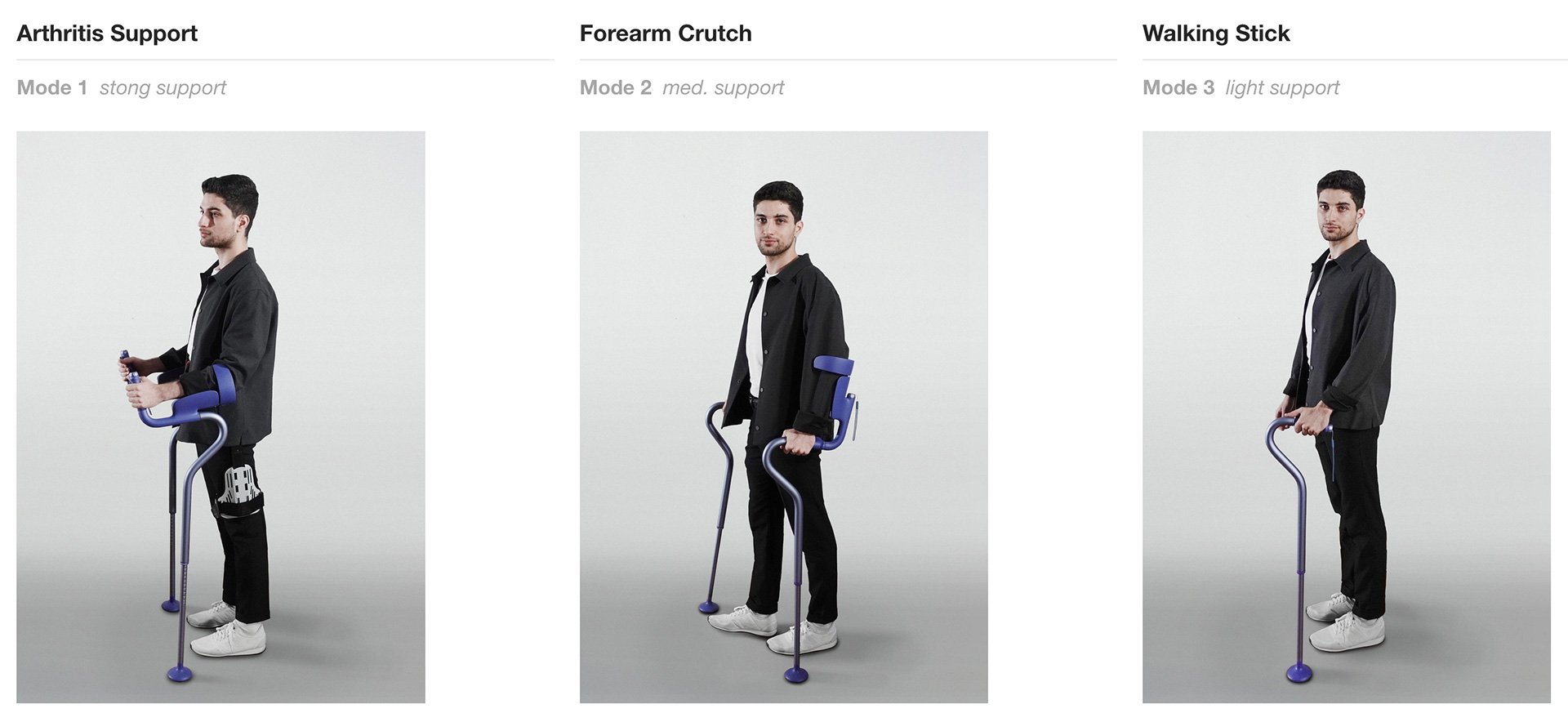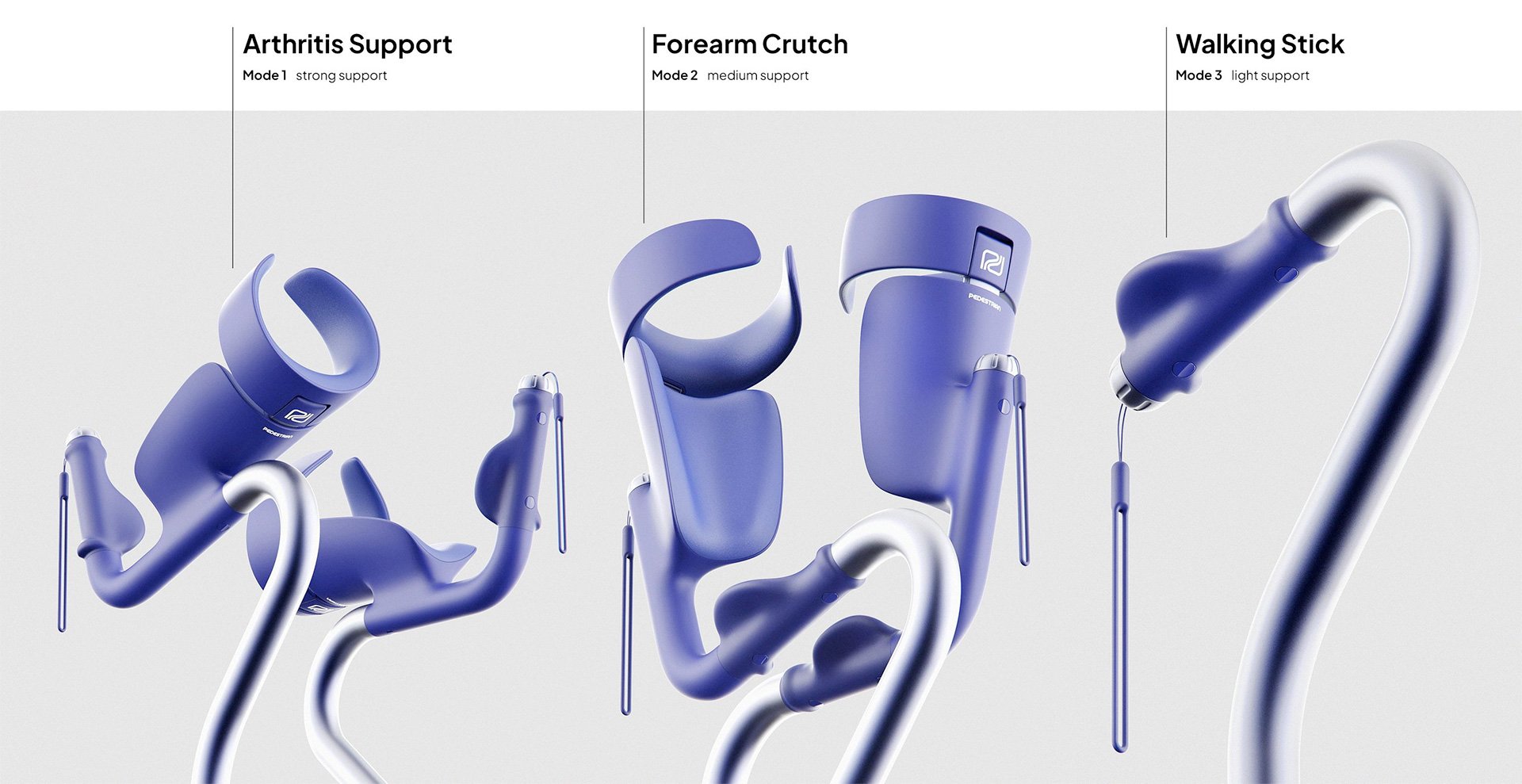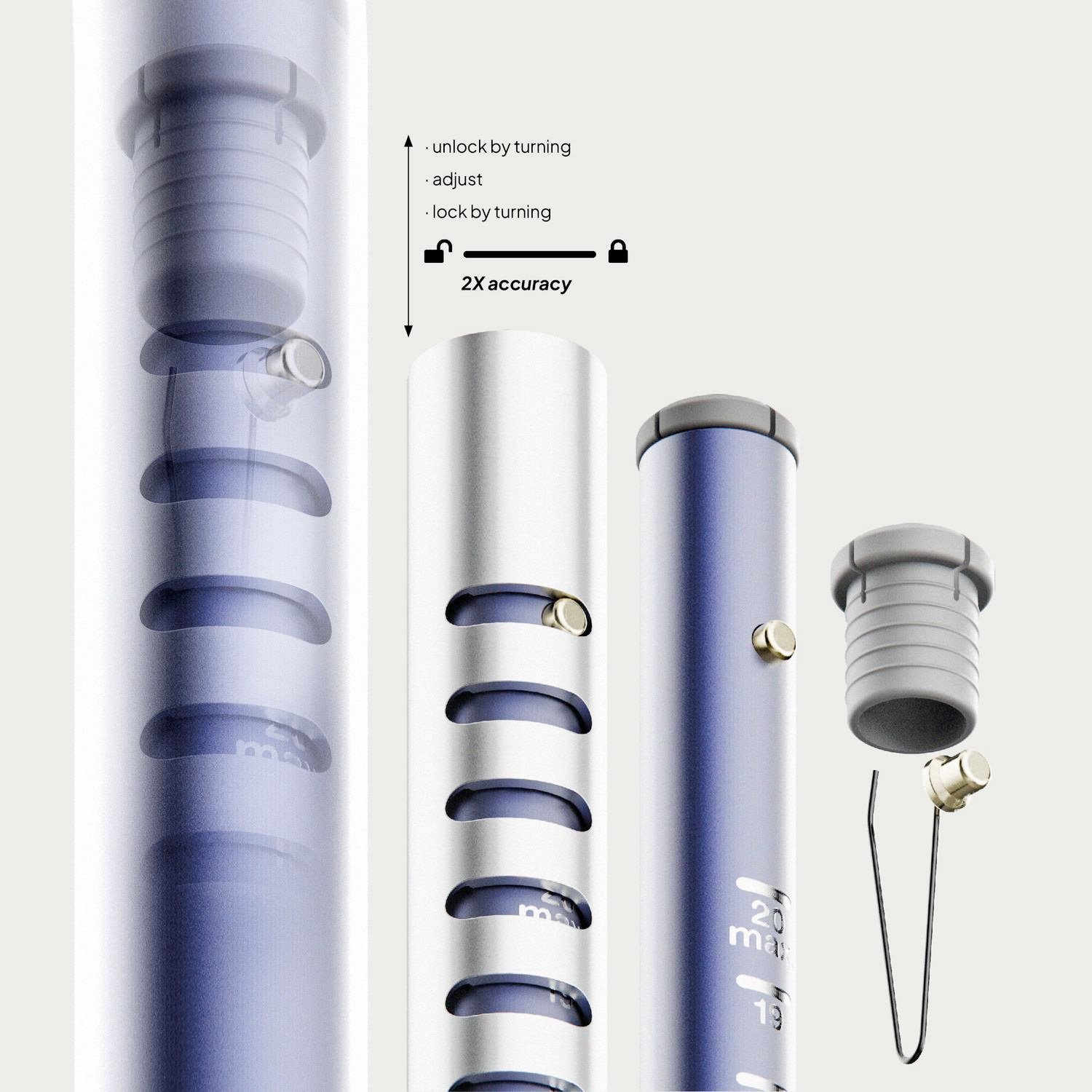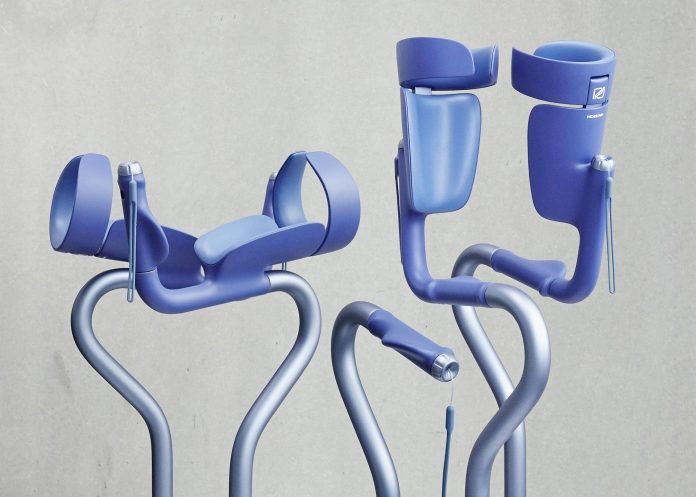Pedestrian, a 3-in-1 mobility aid, targets individuals with medium-term walking disabilities, offering a versatile and ergonomic solution that bridges the gap between short-term aids like crutches and long-term options like wheelchairs. Designed in collaboration with Ayla Warncke, Pedestrian stands out for its human-centered approach, prioritizing user independence and social engagement rather than focusing solely on disability. This design philosophy aligns with Pedestrian’s mission: “The mobility of each and every individual is central to the self-determined shaping of a proactive life!”
A modular, transformable solution
Pedestrian’s standout feature is its adaptability; it transitions between three primary functions—arthritis support, forearm crutch, and walking stick. This flexibility allows users to adjust the device based on their evolving needs, making it an ideal choice for individuals who may not require permanent assistance. Switching modes is straightforward, requiring only a few hand movements, ensuring that users can easily adapt to different levels of support as they recover or as their needs change.
The modularity of Pedestrian further enhances its usability. Each component is interchangeable, allowing adjustments and replacements to extend the product’s life span. This adaptability not only supports long-term use but also promotes shared use, enabling multiple users to benefit from a single system, furthering Pedestrian’s goal to “use and pass on” their innovative design.
Ergonomics and user comfort
Ergonomic design was a priority in developing Pedestrian. Recognizing that conventional walking aids often lead to musculoskeletal strain, Pedestrian’s design minimizes these potential issues. The aid’s soft forms and human-centered aesthetic avoid the stark, medical look common in traditional mobility aids. Instead, Pedestrian uses softer shapes and a refined color palette to promote a self-confident, positive user experience. By consciously avoiding a technoid or strictly medical appearance, Pedestrian encourages users to engage confidently with their mobility limitations.

This user-friendly design approach extends to comfort and safety features, including a specially designed handle that connects seamlessly to both the tube and arm section through an internal aluminum cylinder. This connection ensures stability, comfort, and a sense of control, whether users are walking, standing, or transitioning between movements.
Hands-free functionality and additional features
Pedestrian is designed for active engagement with one’s surroundings, enabling users to maintain their social interactions without feeling hindered by their device. It’s hands-free functionality allows users to easily make calls, text, or even greet friends without setting down the walking aid. Furthermore, the wrist strap provides extra security, giving users the freedom to use their hands without compromising their balance or control over the aid.
Another thoughtful feature is Pedestrian’s self-standing capability. In any mode, the device stands upright independently, providing stability and ease of use, especially in situations where users may need to rest or momentarily let go. Pedestrian’s base, or “foot,” is designed with a large diameter and a 4 mm profile depth, ensuring reliable grip on various surfaces, including wet or slippery ones. The foot’s textured rubber profile prevents slipping and is designed to endure months of use, with easy replacement options available if wear and tear occur.

Practicality for real-life situations
Pedestrian’s design incorporates several practical features for everyday use. The device can be compressed for easy storage and portability, making it convenient for users to take along on outings, even in confined spaces. Additionally, the stand-up aid feature provides a helpful boost for users needing assistance to rise, adding an extra layer of independence.
The walking aid’s interior includes a height-adjustment mechanism, allowing users to tailor the aid to their comfort level. The continuous casting profile inside the tube ensures precision in height adjustments, which can be easily locked with a twist. This level of customization is particularly beneficial for users whose support needs may fluctuate daily, allowing Pedestrian to offer support through varying levels of mobility.

A human-centered approach to design
Pedestrian’s development reflects a commitment to inclusivity and independence. By prioritizing a design that centers on the person rather than the disability, Pedestrian empowers users to engage confidently with their environment and social circles. The softer forms, ergonomic design, and careful selection of colors create an aesthetically pleasing and functional aid that avoids stigmatization.
“We wanted Pedestrian to optimistically accompany the using persons in their process and encourage them to deal with their limitation as confidently as possible,” says a spokesperson from Pedestrian. This philosophy underscores the product’s overall approach, aiming to provide users with an aid that feels like a supportive companion rather than a reminder of physical limitations.

A balanced solution in the mobility aid market
Pedestrian’s introduction addresses a unique gap in the mobility aid market, providing a robust yet adaptable solution for those with medium-term disabilities. Its modularity, ergonomic design, and hands-free capabilities make it an ideal choice for users seeking a balance between short-term recovery aids and permanent solutions. Whether assisting in walking, providing stability in social settings, or ensuring ease of transport and storage, Pedestrian combines functionality with a user-centered approach.
Source: Jonas Krämer



